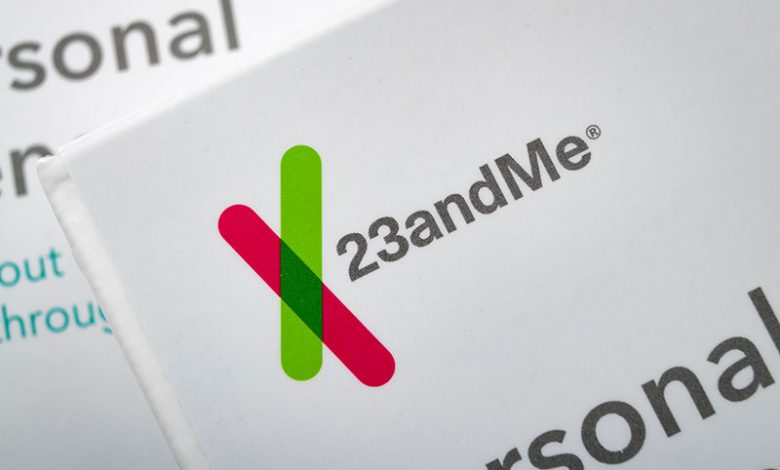
Table of Contents
Overview of the 23andMe Data Breach
The genetic testing company 23andMe experienced a significant data breach which was first reported in October. The incursion by cybercriminals resulted in the unauthorized access to various user accounts. The attackers capitalized on this initial breach to scrape additional personal information from an even larger subset of users, specifically those who had opted into 23andMe’s social sharing service known as DNA Relatives.
Initial Report of the Attack in October
The breach initially came to light in an obscure manner, as 23andMe did not reveal the full extent and specifics of the incident. What was known, however, was that certain user accounts had been compromised. The company grappled with spreading uncertainty among its users, many of whom were trying to come to grips with the potential fallout and implications of their personal genetic data being exposed.
Attackers Infiltrated User Accounts via DNA Relatives
A deeper probe into the breach exposed that the intruders had not just gained access to direct user accounts but had also taken advantage of the company's DNA Relatives feature to extract more information. This discovery underlined the vulnerability and risks associated with features that aim to promote user interconnectivity and social sharing, especially when dealing with sensitive personal data.
Data Selling on Criminal Forums
Amidst the aftershocks of the attack, it was reported that hackers were actively selling data believed to be collected from over a million 23andMe users on criminal forums. This raised the alarm about the scope of the data breach, revealing the potential for wide-scale privacy violations and misuse of genetic and personal information.
Expanded Information on the Breach
In the aftermath of the breach, through subsequent investigations and a filing with the U.S. Securities and Exchange Commission, 23andMe acknowledged that the scale of the breach was extensive. It entailed unauthorized access to approximately 0.1% of user accounts, which translates to roughly 14,000 of their over 14 million customers. Although the company emphasized this figure, further scrutiny revealed that another 5.5 million individuals who opted into DNA Relatives had their data extricated by the attackers, and an additional 1.4 million DNA Relatives users had their Family Tree profile information accessed.
Details of Compromised Data
The assortment of compromised data varied among impacted users but included elements such as display names, relationship labels, predicted relationships, and the percentage of DNA shared with DNA Relatives matches. Besides these, there were other sensitive details extracted in certain instances, including ancestry reports, family names, profile pictures, birth years, and links to self-created family trees, among other profile elements.
Recent Disclosures and Scale of Breach
In a recent development, 23andMe provided updated details related to the extent of the data breach that was initially discussed in October. This disclosure was part of a United States Securities and Exchange Commission (SEC) filing. In this filing, the company admitted that a threat actor was able to gain access to approximately 0.1% of user accounts, which is roughly 14,000 accounts, given that 23andMe has more than 14 million customers. This number, while seemingly small in percentage terms, represents a significant number of individuals potentially affected by the breach.
Additional Compromised Data and Number of Affected DNA Relatives Users
Beyond the 14,000 user accounts that were directly accessed, the breach had broader implications for a much larger segment of 23andMe customers. Attackers had managed to scrape the personal data of about 5.5 million individuals who had opted-in to the DNA Relatives feature. In addition to this substantial figure, there was also an additional 1.4 million DNA Relatives users whose Family Tree profile information was accessed. As the company elaborated on the information contained in the SEC filing by providing these more specific numbers, the broader ramifications of the breach became more apparent.
Scope of Stolen Data Including Detailed User Information
The scope of the stolen data encompassed a range of sensitive information. For the sizable group of approximately 5.5 million people, compromised data included display names, most recent logins, relationship labels, predicted relationships, and the percentage of DNA shared with DNA Relatives matches. For some users, the breach was even more invasive, with hackers extracting ancestry reports, chromosome matching details, self-reported locations, ancestor birth locations, family names, profile pictures, birth years, links to self-created family trees, and other profile information. Additionally, for the subset of 1.4 million affected users, specifically from their Family Tree profiles, information such as display names, relationship labels, and in some cases, birth years and self-reported location data, were compromised. These revelations underscored the serious breach of privacy for millions of users, intensifying concerns about the security of personal genetic data stored online.
Responses and Questions Arising from the Breach
In response to the breach, 23andMe implemented several security measures aimed at reinforcing the protection of user accounts. Among these measures, the company enforced a mandatory password reset for all users to help secure account safety. Following the initial reset, it also introduced two-factor authentication as an obligatory step for all customers to provide an additional layer of security.
23andMe’s Measures: Password Reset and Two-Factor Authentication
The introduction of these security features was part of a broader industry trend, as other genetics and ancestry-related services like Ancestry and MyHeritage also promoted the adoption of two-factor authentication for their users in the wake of the 23andMe incident. This incident clearly served as a wake-up call within the industry about the crucial importance of robust account security.
Credential Stuffing Explained as the Cause, Yet Some Users Report Unique Credentials
Credential stuffing has been delineated by 23andMe as the technique employed by attackers to compromise user accounts. This method exploits scenarios where login credentials leaked from one service are reused on other platforms. However, several users have countered this explanation with claims that their 23andMe usernames and passwords were unique, indicating that their details could not have been exposed through other breaches. This disparity has led to increased scrutiny and questions regarding the true vulnerabilities and methods used in the attack.
Rob Joyce’s Case Highlighting the Complexity of Linked Accounts and Past Breaches
In the case of Rob Joyce, the cybersecurity director for the U.S. National Security Agency, it became evident that the issue might be more intricate than initially represented. Despite Joyce using a unique email address for his 23andMe account, which had not been involved in other web scrapes, he raised concerns about how his account could have been a target for credential stuffing. It was revealed that a previous partnership between 23andMe and MyHeritage, which Joyce had utilized, may have led to his unique 23andMe email address being compromised during the MyHeritage breach in 2018. Though neither of his accounts was successfully breached, his example illuminated the cascading risks when companies share user data and the lasting implications of such partnerships, particularly when a past breach is involved. Joyce's situation brought to light the inter-connected vulnerabilities that can arise in an ecosystem of online services, thereby amplifying concerns over user data protection and privacy.
Implications and Critique of Data Breach Handling
The data breach at 23andMe has highlighted the complex web of issues surrounding user data sharing between companies. As companies increasingly interlink services and functionalities, security concerns grow, with breaches potentially exposing user information beyond the originally intended bounds. The interconnected nature of online services means that a breach in one area can have cascading implications for user data shared with or managed by partner organizations.
User Data Sharing Between Companies and Security Concerns
This interconnectivity was spotlighted by the experience of Rob Joyce, who found that his unique account details were potentially compromised through MyHeritage's breach, despite 23andMe not having been directly breached. This incident underscores the critical need for secure data sharing protocols and highlights the risks involved when company partnerships involve data transfers or shared functionalities.
The Challenge of Differentiating Between 'Breached' and 'Scraped' Data for Users
Another consequence of the 23andMe incident is the difficulty for users and the public to understand the distinction between data that has been 'breached' directly from company systems and data that has been 'scraped' as a result of secondary access. Without clear reporting, users are often left in the dark about the nature and scope of their data's exposure. The semantic nuances used in company disclosures often do not clarify the situation for those affected, resulting in further uncertainty and distress.
Call for Better Policy and Reporting Standards in Cybersecurity
Cybersecurity experts, like Brett Callow from Emsisoft, argue that the unfolding situation with 23andMe demonstrates the necessity for improved policies and standardized reporting practices in cybersecurity. Uniform disclosure and reporting laws could help to illuminate data breach incidents, providing victims with clearer information and helping to prevent obfuscation that benefits cybercriminals more than the public.
23andMe’s Changes to Terms of Service and Arbitration Process
In the wake of the breach revelations, 23andMe also informed customers of changes to its terms of service concerning dispute resolution and arbitration. The new terms, according to the company, are designed to expedite the resolution of disputes and simplify the arbitration process in cases where there are multiple similar claims. This procedural change is significant, as it pertains directly to how users can pursue claims against the company following incidents like the data breach.
Option for Users to Opt Out of New Terms Within a Certain Timeframe
Crucially, 23andMe has provided users with the option to opt out of the new terms. To do so, customers must notify the company of their decision to decline the changes within a 30-day period after receiving notice. This choice is a critical right for users who prefer to retain their ability to take legal action without being bound by the new arbitration framework. Ensuring that users are aware of and understand this opt-out process is an essential aspect of maintaining trust and transparency.




